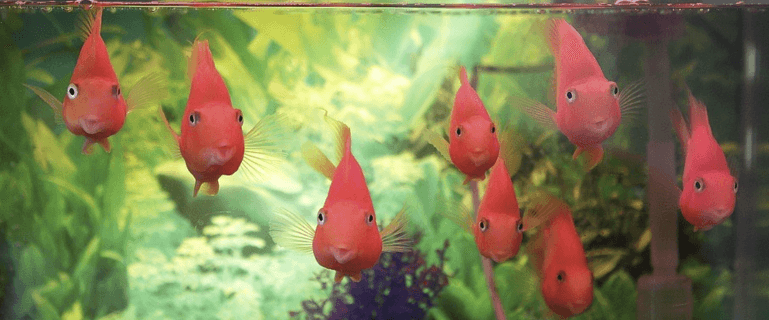Most people clearly know how to set up a dog space. They buy a 10 or 20 lb bag of kibble, a bowl for water, one for the kibble, and a doggie bed. Easy peasy. But going back in their memory banks to when mom brought that first goldfish in a bowl. You may remember the excitement. That is until about a month or so when "Moby Dick" was floating belly side up. Yes, the vast majority of goldfish never live past a month, in part because they are half dead when they come from the pet store. Goldfish are considered disposable fish by pet stores, seen primarily as fish food for other fish.
The other reason "Moby" died so quickly id that the minimum amount of water a goldfish needs is around 30 gallons, but they typically swim in a 2.5-gallon aquarium. The truth is, most goldfish die of ammonia suffocation, from too little water and water that is not aerated. Okay, lesson learned but now you're in your 30s and want to do the fish thing right, If you have any question regarding fish or tank you can ask it here https://catdogs.pet/forum/fish-and-aquariums pet forum.
What do you need for a fish tank?
First, you will need the tank itself. Your tank size is dependent on the size and the amount of fish you will be keeping. In general, a fish tank of around 10 gallon is sufficient for smaller fish while larger fish may need a 25 gallon, 29 gallon or 40-gallon tank. If you are going to keep salt-water fish, you will typically need a 100 gallon tank with a horizontal rather than a vertical orientation. Fish need more room to swim than they need depth.
The next essential requirement you will need is a Water Conditiontioner for your fish. Tap water, which is full of chlorine. is very toxic to fish. Second, fish tend to excrete food throughout your fish tank which causes the level of ammonia to rise in the tank. Water conditioner for fish comes in small bottles, typically costing less than $10.
The second requirement is to buy a set of water test strips. Test strips will tell you instantly the level of General water Hardness (GH), nitrates, alkalinity (KH), and pH levels. The test strips will help you know when to change the water in your tank. Next, you are going to need a fish filter. While the water conditioner puts the finishing touches on the water, your fish filter does the major work in keeping your fish clean. In addition, you will need an air pump. Air pumps keep the water oxygenated making it easier for the fish to breed and also has the effect of evenly distrubuting heat.
You will also need a substrate, usually gravel, and possibly some aquarium plants. Finally, you will want some aquarium lighting, usually a UV light. The lighting is not essential for the fish, but for you, it will improve the aesthetics.
As to the price, a complete aquarium kit will typically run around $100 to $120 or so, although people spend thousands on aquariums.
What water to use for fish tank?
Almost all fish stores use tap water that has been treated to remove chlorine and other contaminants in your water. Do not fill up your fish tank with bottled water or water produced through reverse osmosis. The problem is you may be removing needed minerals that help make the fish healthy. Be sure to set up the tank, the water, the filter, the pump, and the substrate a few days before adding fish to the tank.
How to set up a fish tank
- The first step is to plan by determining what fish you will want to keep.
- Next, clean the tank but make sure you do not need to use any detergent. In addition, run the substate through the water to clean it.
- Next, fill up the tank with water. Then add the filter, the pump, and any water plants.
- Finally, let the water sit for a minimum of two days before testing the water, and once the water is ready to go, only then add fish.
Your local pet or fish store will be happy to keep your fish in a separate tank until the water is prepared. and ready.
